Results so far in animals suggest the major limitation to DNA barcoding is very young species pairs. Young species pairs may not have accumulated enough differences in the 648 bp barcode region of COI to form distinct lineages in neighbor-joining analysis. Because overall rates of mitochondrial DNA evolution differ among animal groups, and the relative rates of specific mitochondrial genes also differ, it may turn out that COI barcoding will be more effective in separating young species pairs in some groups than in others.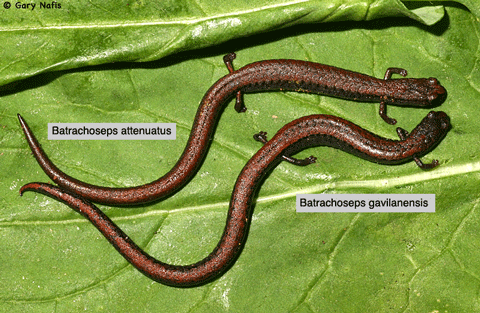
20 My of genetic divergence and morphologic stasis
In April 2006 Systematic Biology Mueller compares complete mitochondrial genomes of 27 salamander species. The genetics of salamanders are particularly important as they are notoriously difficult to distinguish and classify due to morphologic stasis and frequent homoplasy. Many new species of salamanders have been discovered and described on the basis of mitochondrial divergence. Mueller found that COI has the highest rate of evolution among all mitochondrial genes in salamanders, suggesting it will be especially effective at resolving young species in this group. Despite these very encouraging results, the paper ends with a worried discussion about using COI for DNA barcoding of salamanders, because its evolutionary rate varies between lineages.
A better appreciation of the power of a standardized genetic approach for amphibians is Ron et al.’s paper in May 2006 Molecular Phylogenetics and Evolution which uses mitochondrial DNA to look at phylogeny and new species in the Neotropical tungara frog genus Engystomops. The authors observe that “the use of genetic markers in systematics has an enormous potential to facilitate the global inventory of biodiversity”, and conclude, based on their results and those in similar studies, that “the increasing use of molecular techniques will lead to the discovery of a vast number of species of Neotropical amphibians.”
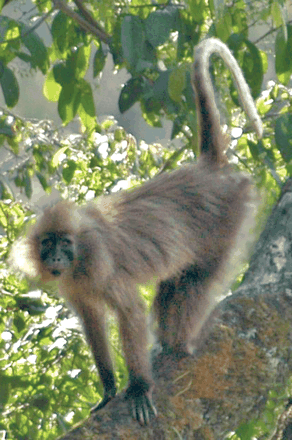 A year ago in Science,
A year ago in Science, 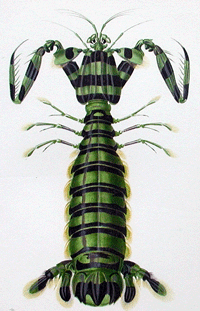 a what is thought to be a well-understood group, stomatopods, commonly known as mantis shrimp. Stomatopods are marine crustaceans distinct from true shrimp and are thought to include about 400 species worldwide. Like many marine species, they have a bipartite life cycle where dispersal is achieved through a planktonic larval developmental stage. However, larval stages are notoriously difficult to identify morphologically. Barber and Boyce first established a database of COI DNA barcodes from adult forms of nearly all known species. They then applied DNA barcoding to planktonic larvae collected in light traps at locations in the Pacific Ocean and Red Sea. Comparison of
a what is thought to be a well-understood group, stomatopods, commonly known as mantis shrimp. Stomatopods are marine crustaceans distinct from true shrimp and are thought to include about 400 species worldwide. Like many marine species, they have a bipartite life cycle where dispersal is achieved through a planktonic larval developmental stage. However, larval stages are notoriously difficult to identify morphologically. Barber and Boyce first established a database of COI DNA barcodes from adult forms of nearly all known species. They then applied DNA barcoding to planktonic larvae collected in light traps at locations in the Pacific Ocean and Red Sea. Comparison of 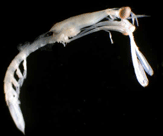 sequences from 189 larval forms revealed 22 distinct larval operational taxonomic units (OTUs), but a minority of these matched known species, suggesting that stomatopod species diversity is underestimated by a minimum of 50% to more than 150%. Their results support general use of DNA barcoding as a rapid, relatively-inexpensive first step in cataloging marine species with planktonic larvae. A similar approach has been applied on land by Smith et al “
sequences from 189 larval forms revealed 22 distinct larval operational taxonomic units (OTUs), but a minority of these matched known species, suggesting that stomatopod species diversity is underestimated by a minimum of 50% to more than 150%. Their results support general use of DNA barcoding as a rapid, relatively-inexpensive first step in cataloging marine species with planktonic larvae. A similar approach has been applied on land by Smith et al “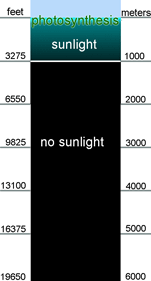 The deep oceans are the largest biotic space on earth, but remain largely unexplored.
The deep oceans are the largest biotic space on earth, but remain largely unexplored. 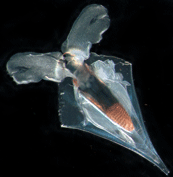 According to Ann Bucklin, lead scientist for CMarZ and Head of the University of Connecticut Marine Sciences Department, “we are just starting to realize how little we know about species variety. We used to think we knew many species well, but the advent of DNA barcoding has radically altered that perception. Genetically distinctive species of zooplankton are being found with increasing frequency.”
According to Ann Bucklin, lead scientist for CMarZ and Head of the University of Connecticut Marine Sciences Department, “we are just starting to realize how little we know about species variety. We used to think we knew many species well, but the advent of DNA barcoding has radically altered that perception. Genetically distinctive species of zooplankton are being found with increasing frequency.” 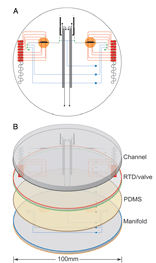 ABI’s smallest sequencer is about the size and weight of a house air conditioning unit [ABI 310: 95 kg (208 lbs); 61 x 56 x 86 cm (24 x 22 x 34 in)]. Researchers who developed the
ABI’s smallest sequencer is about the size and weight of a house air conditioning unit [ABI 310: 95 kg (208 lbs); 61 x 56 x 86 cm (24 x 22 x 34 in)]. Researchers who developed the